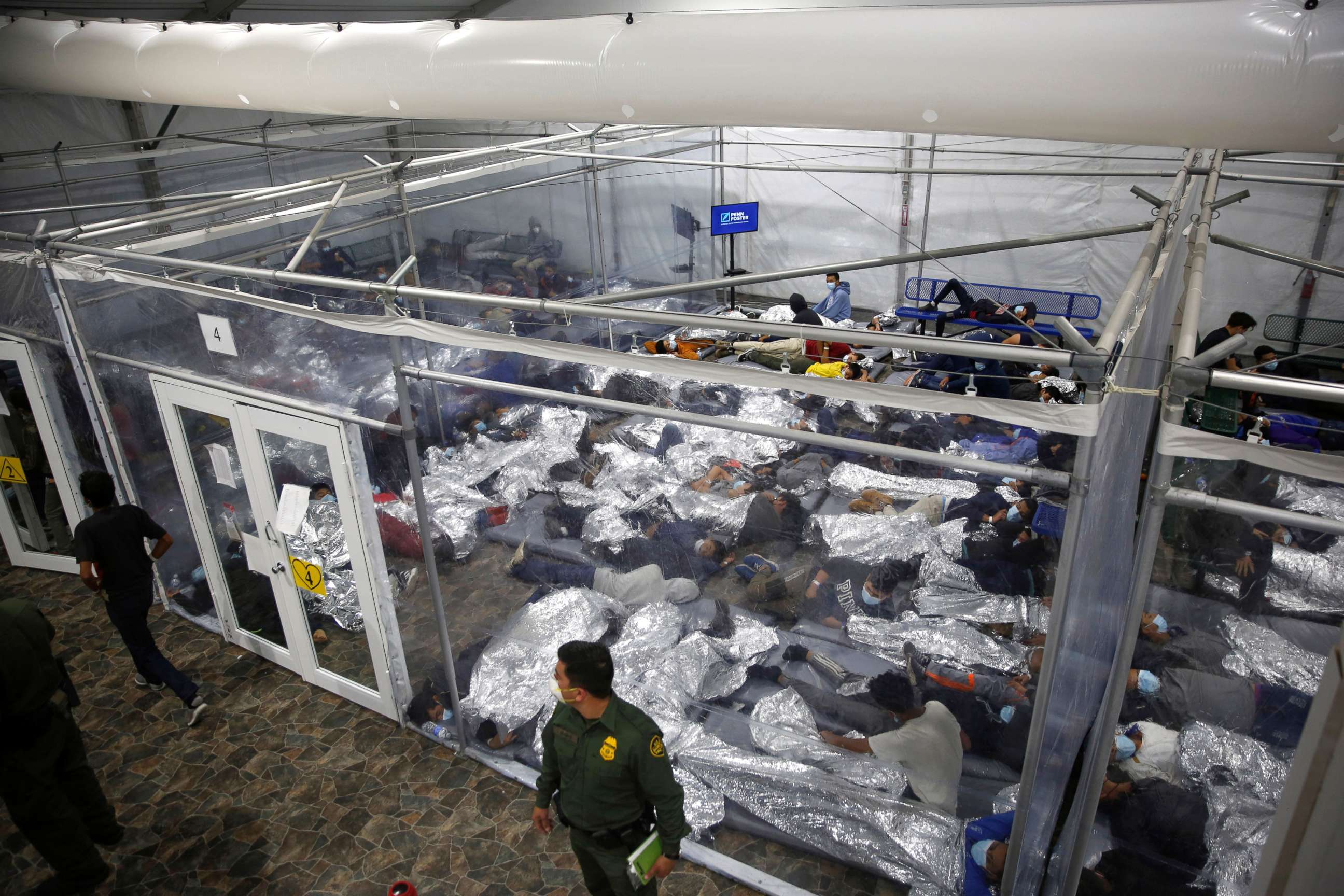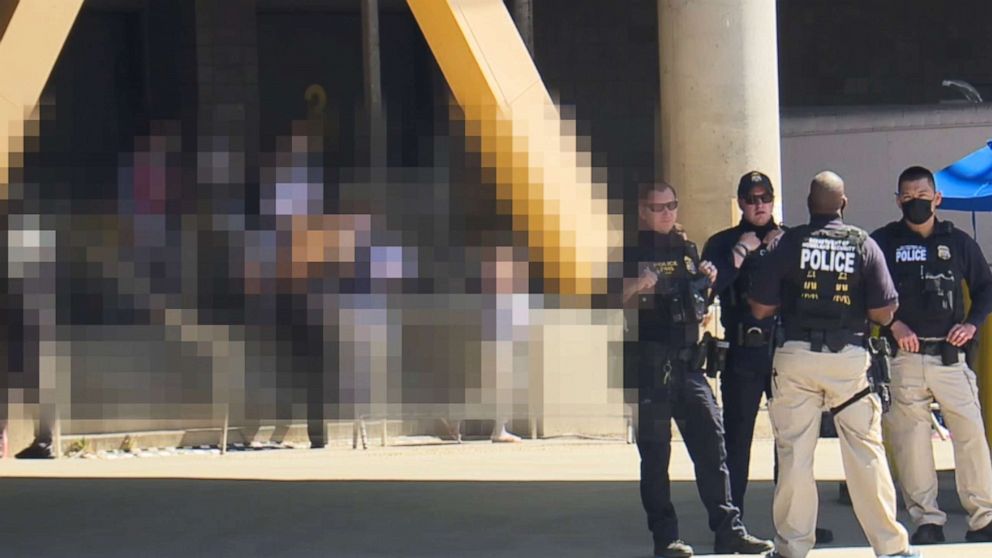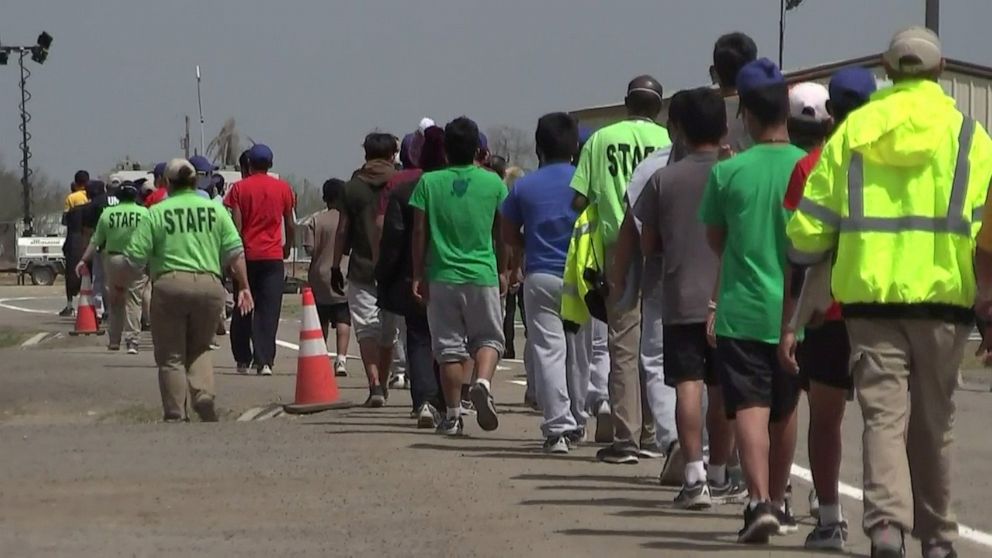COVID-19 cases among unaccompanied migrant children in facilities spark concerns over crowding
There are over 17,000 unaccompanied minors in CBP custody and HHS care.
A startling number of unaccompanied migrant children have tested positive for COVID-19 after being transferred out of border stations, sparking concern over cramped and overcrowded facilities that may allow the virus to spread.
Customs and Border Patrol facilities at the border are severely overloaded and do not conduct their own COVID-19 testing, officials said.
The agency told ABC News: "On-site medical personnel can provide basic assessment and supportive treatment, but suspected COVID-19 cases are referred to local health systems for appropriate testing, diagnosis and treatment."
Advocates say this poses a danger to all migrants, and creates a threat of outbreaks when youth migrants are moved. As of a Tuesday report, there are 17,641 unaccompanied migrant minors in government care -- 5,606 children are in CBP custody and 12,035 in the care of the Department of Human and Health Servies, CBP told ABC News.
At the San Diego Convention Center, which opened as a temporary shelter for migrant teenagers between the ages of 13 and 17 on Saturday, 32 out of 247 girls who arrived Monday night tested positive for COVID-19, HHS said to local ABC affiliate KGTV.
In total, 82 migrant teens at the convention center have tested positive for COVID but none needed to be hospitalized, HHS said.

The girls will be housed at the center until social workers connect them with relatives or sponsors in the U.S.
HHS officials said those who tested positive were brought to San Diego on a separate plane and their intake was separate from the others. The girls who have tested positive are separated from those who tested negative, and are stationed on a different floor. Those who tested negative are tested for COVID-19 every three days.
Unlike the Trump adminstration, which under public health code "Title 42" removed unaccompanied minors from the U.S., the Biden administration is allowing them to stay until their cases are processed. Now the pandemic poses an even bigger threat as fewer people are being turned away and facilities become more overwhelmed.
From March 1 to March 30, there has been a total of 647 COVID-19 cases in 40 out of 50 Texas HHSC Office of Refugee Resettlement operations, Texas HHS told ABC News. These are self-reported positive COVID-19 cases in migrant children in care, Texas HHS also said.
At the Carrizo Springs, Texas, facility for migrant children, 10% to 11% of kids have tested positive for COVID-19, a source familiar with the matter told ABC News Wednesday. There were 766 unaccompanied migrant minors stationed at the site, which has 952 beds, at the time.
The source said the site's contractor is a nonprofit that provided emergency coronavirus response resources to Texas this year and requested that COVID-19 positive teens be sent to the facility.

Late Tuesday 500 unaccompanied minors were brought to Fort Bliss, Texas, which will house boys between 13 and 17. The facility can house as many as 5,000 children. It's not yet clear how many children there have tested positive for COVID-19.
Advocates say the number of COVID-19 cases points to negligence by border facilities, which detains migrants coming from the border before handing unaccompanied children off to agencies like HHS. Once at HHS facilities, those centers work with local hospitals to provide medical attention and testing.
"It's not surprising then, that girls who are legally not supposed to be held for more than 72 hours and are being held for a much longer period of time at those facilities are contracting the disease," Pedro Ríos, the director of the U.S.-Mexico Border Program with the American Friends Service Committee, which aids migrants in San Diego, told ABC News.
He described those facilities as "horrendous or ill-equipped to handle any type of medical emergency or any situation where there could be a spread of communicable disease."

"They don't have the medical supplies there to handle any type of outbreak or treat anyone with any serious illness. That's what we've seen children die in the past," Ríos said. "It's urgent that anyone, especially unaccompanied minors, are removed so that they're not placed in greater harm."
The Office of Refugee Resettlement, which operates under HHS, oversees more than 200 shelters in 22 states for unaccompanied minors, according to the department. Altogether, the network has capacity for 13,500 beds, but officials say more is needed to manage COVID-19 and the influx of unaccompanied minors.
On Tuesday reporters were given a first look inside a CBP-run facility under the Biden administration, which revealed severe overcrowding. A temporary tent facility in Donna, Texas, meant to hold 250 migrants had a population of more than 4,100 crammed inside on Tuesday.
Of those, 3,400 were unaccompanied minors and more than 2,000 waited beyond the legal limit of 72 hours, per Customs and Border Protection Tuesday.
The Centers for Disease Control and Prevention told ABC News: "CBP facilities are currently housing increasing numbers of individuals, including children, and this is contributing to increased risk for COVID-19 outbreaks in these congregate settings," adding that HHS facilities are "more suitable for child-focused care with appropriately trained staff."
ABC News' Quinn Owens contributed to this report.




